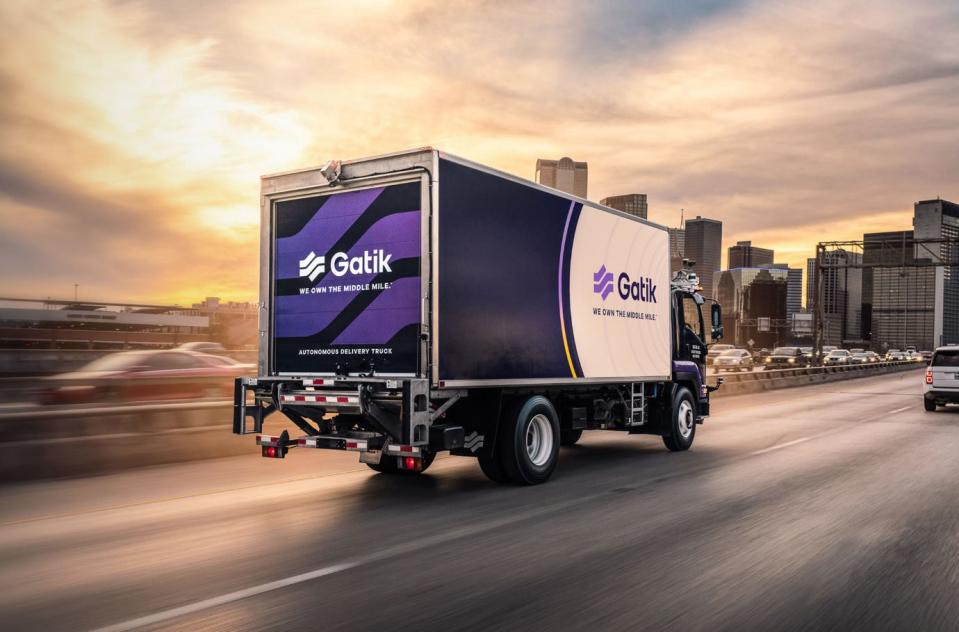Self-Driving Truck Developer Makes the Case for Safe Operations

Autonomous truck developer Gatik submits its SAE Level 4 tech for independent testing with two firms, as part of an effort to make the safety case for Level 4 tech in carrying freight.
The autonomous truck startup has recently partnered with Isuzu to develop a custom platform for self-driving trucks.
SAE Level 4 systems have experienced a wider rollout in robotaxis over the past year, along with some stumbles, but trucks are seen as the next major domain for advanced autonomy.
The trucking industry is approaching a point at which autonomous driving is poised to break through into the mainstream, following piecemeal efforts over the past few years.
And autonomous tech developer Gatik, which has been testing its SAE Level 4 software and hardware for the past few years with commercial partners, is eager for self-driving tech, or what it calls Freight-Only operations, to become a common sight on the roads.
But first, the industry as well as regulators will need to be convinced of the safety potential behind SAE Level 4 trucking.
To achieve this, Gatik has reached out to two companies to independently test its autonomous tech, with Edge Case Research and TÜV SÜD set to verify the safety case behind Freight-Only operations.
"While we applaud the National Highway Traffic Safety Administration's leadership in establishing the Voluntary Safety Self-Assessment (VSSA) process, we at Gatik have chosen to go far beyond what a VSSA calls for with this incredibly comprehensive assessment," said Adam Campbell, Gatik’s Head of Safety.
The planned assessment program will examine engineering quality, organizational safety culture, vehicle safety, and cyber security, among other factors. The significant stumbles experienced by the rapidly growing robotaxi industry have certainly yielded some sobering insights into the scaling of Level 4 tech on public roads as well.
"Such an exhaustive process ensures that all key stakeholders, including customers, federal, state, and local government, the first responder community, and the public have confidence in the independently verified safety of Gatik's technology and deployment practices," Gatik notes.
Gatik has been operating driverless Level 4 trucks in a handful of states now, running shorter routes of several miles as part of Walmart's operations in Arkansas, while also testing trucks on a delivery route in Kansas.
These real-life tests have given the company insights into scaling its operations, while also proving the safety potential behind the technology.
These middle-mile routes are what Gatik has in mind for wider Level 4 operations in the near future, with a number of companies now looking to automate deliveries between large warehouses and stores.
Gatik has also recently partnered with Isuzu to develop a truck chassis specifically for autonomous hardware, with plans for a market launch in 2027.
But on a wider scale, Level 4 operations still depend on state-by-state legislation to be permitted in the first place. And at the moment, that's a tougher task than simply shipping several hundred trucks with Level 4 tech to a given commercial partner.
And it's unlikely that autonomous routes will stretch across state lines early on, for this and other reasons.
"We are assessing our complete autonomous ecosystem to ensure safety in the real world, not just on paper. Our goal is to create safer roads for everyone," said Gautam Narang, Gatik CEO.
Gatik isn't the only one in this industry edging closer to a future where freight will move in box trucks without a driver behind the wheel.
Several companies in Texas are working toward the same goal on a larger, Texas-sized scale that will include autonomous semi trucks, with a route between Houston and Dallas expected to be the first major corridor for driverless trucks.
Will we see autonomous trucks in noticeable numbers before 2030, or will this technology deployment wait until the next decade? Let us know what you think in the comments below.

 Yahoo Autos
Yahoo Autos 